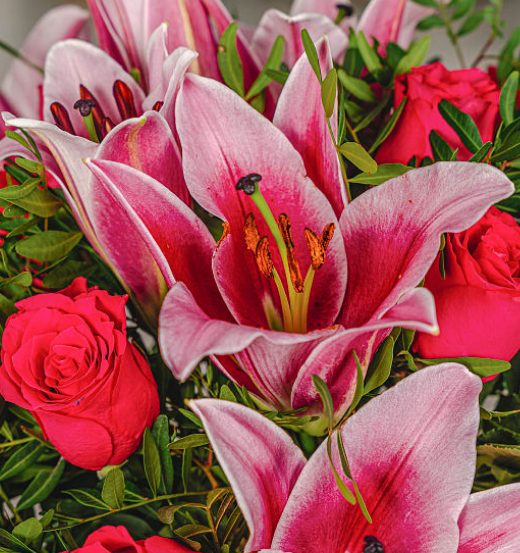
How to Preserve Flowers for Long-lasting Beauty
Flowers have a remarkable ability to brighten our homes, lift our spirits, and evoke a sense of beauty and tranquillity. Whether received as a gift, harvested from the garden, or purchased from a florist, fresh flowers bring joy and elegance to any space. However, their natural beauty is ephemeral, and without proper care, flowers can wilt and fade all too quickly. Fortunately, there are several techniques for preserving flowers and extending their lifespan, allowing you to enjoy their beauty for longer periods. Let’s explore some effective methods to preserve flowers and maintaining their freshness and vibrancy for days, weeks, or even months to come.
Air Drying
Air drying is one of the oldest and simplest methods for preserving flowers, particularly varieties with sturdy petals and foliage. To air dry flowers, gather them into small bunches and hang them upside down in a cool, dry, and well-ventilated area away from direct sunlight. Allow the flowers to dry completely for one to three weeks, depending on their size and moisture content. Once dried, the flowers can be used in dried flower arrangements, wreaths, or crafts, preserving their natural shape and colour for months or even years.
Pressing
Pressing is another traditional method for preserving flowers, ideal for delicate blooms such as roses, violets, and daisies. To press flowers, place them between layers of absorbent paper or parchment paper inside a heavy book or flower press. Apply pressure evenly and leave the flowers undisturbed for several weeks until they are completely dry and flattened. Pressed flowers can be used to create botanical art, greeting cards, or framed displays, preserving their intricate beauty for posterity.
Silica Gel Drying
Silica gel drying is a popular method for preserving flowers with intricate shapes and delicate petals, such as orchids, lilies, and roses. Silica gel is a desiccant that absorbs moisture from flowers while maintaining their shape and colour. To dry flowers with silica gel, bury them in a container filled with silica gel crystals, making sure to cover the flowers completely. Seal the container and leave it undisturbed for several days to a week until the flowers are dry. Silica gel drying preserves the natural form and colour of flowers, making them suitable for use in floral arrangements, crafts, and decorative displays.
Flower Pressing with Microwaves
For a quicker alternative to traditional flower pressing, consider using a microwave to dry flowers. This method involves placing flowers between layers of absorbent paper and microwaving them in short intervals to remove moisture. While microwaving can cause some color loss and distortion in flowers, it is a convenient option for preserving flowers in a fraction of the time required for traditional pressing methods. Exercise caution when microwaving flowers to avoid overheating or scorching them, and monitor the process closely to achieve the desired results.
Glycerine Preservation
Glycerine preservation is a technique for preserving flowers while maintaining their natural suppleness and colour. To preserve flowers with glycerine, mix one part glycerine with two parts warm water and immerse the flowers in the solution. Allow the flowers to soak for several days to a week until they absorb the glycerine solution and become pliable. Glycerine-preserved flowers retain their natural appearance and texture, making them ideal for use in floral arrangements, wreaths, and bouquets.
Floral Sealants
Floral sealants are commercial products designed to extend the lifespan of cut flowers by sealing moisture inside the stems and petals. These sealants can be applied directly to freshly cut flower stems or sprayed onto flower petals to prevent wilting and dehydration. Floral sealants are particularly effective for preserving delicate flowers such as hydrangeas, carnations, and chrysanthemums, helping them retain their freshness and vibrancy for longer periods.
With the right techniques and proper care, it’s possible to preserve flowers and extend their beauty long after they’ve been cut or harvested. Whether air drying, pressing, using silica gel, glycerine preservation, or applying floral sealants, there are multiple methods available for preserving flowers to suit different types of blooms and desired outcomes. By following these preservation techniques, you can enjoy the natural beauty of flowers for extended periods, adding a touch of elegance and charm to your home décor, special occasions, and creative projects.
